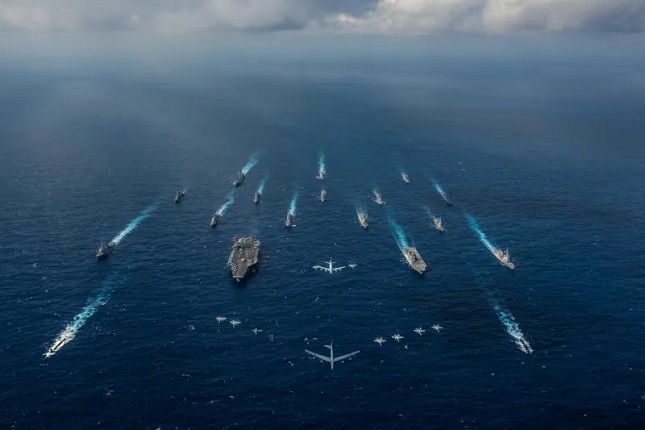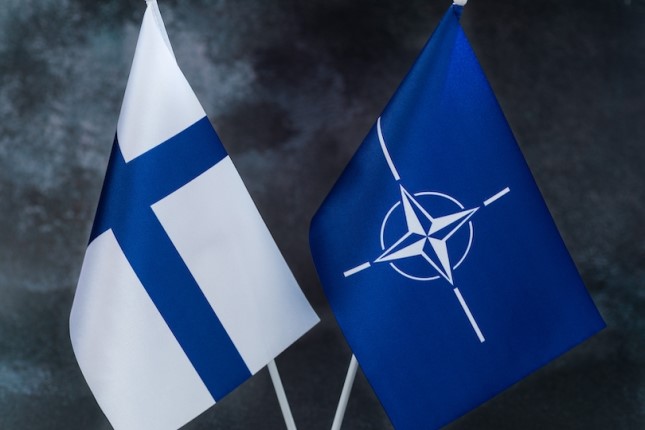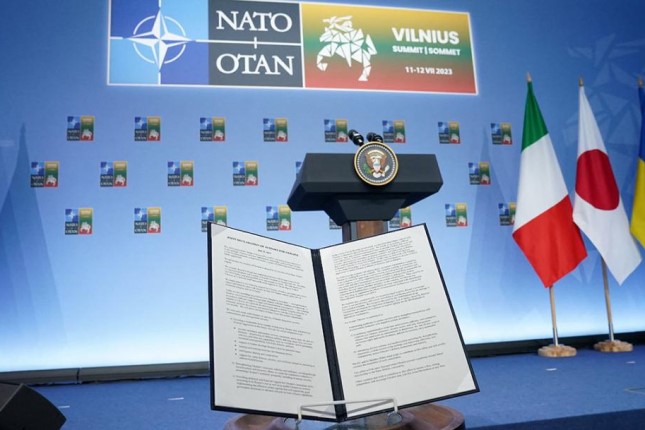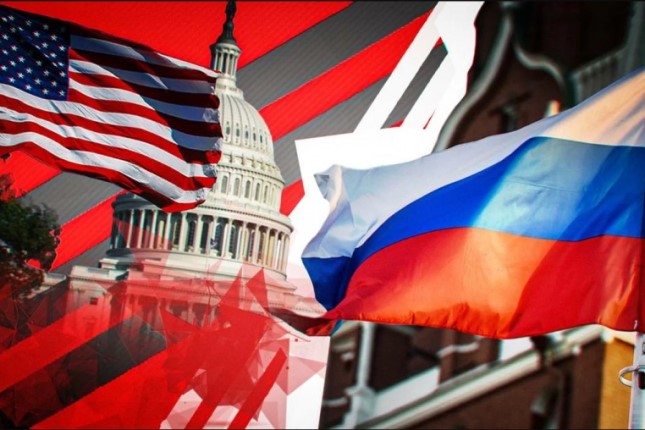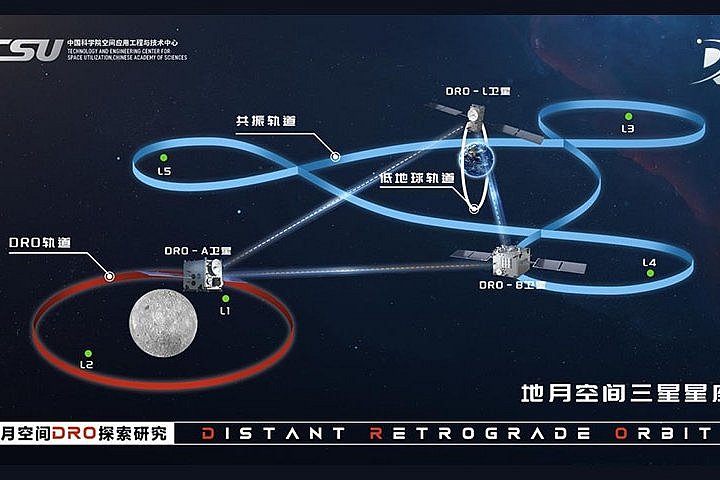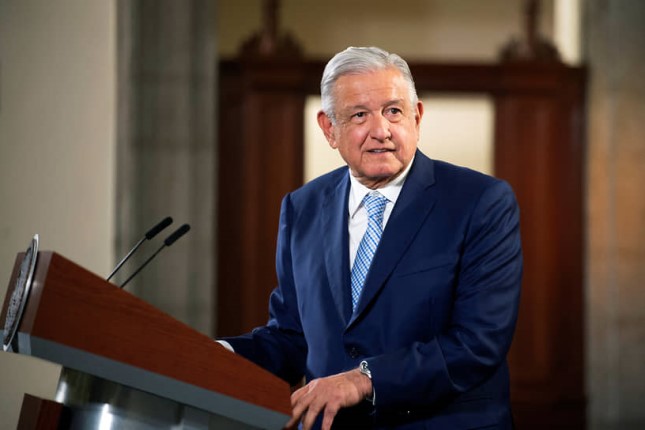The key geopolitical issue of our time is whether the US and China can manage their relations in the years and decades to come without a war. This was the theme of Graham Allison's 2017 important book Destined for War: Can America and China Escape Thucydides’s Trap. The Harvard professor's thesis was that major wars almost invariably result from the confrontation between a status-quo power, America, and a rising challenger, i.e. China.
The challenge for the two powers, and the looming danger to the rest of the world, is clear. In the years ahead, can the Chinese government rationalise a cosmology in which they are not seen as the only rightful, inherently superior centre of the civilised world? More significantly, can the United States accept that it will have to coexist with another global superpower on equal terms?
The danger of a catastrophic outcome was significantly increased on May 23, when President Joseph Biden declared that the United States would intervene militarily if China attempted to take Taiwan by force. The White House promptly tried to present Biden’s statement consistent with Washington's traditional policy, but this was incorrect. His statement was clearly at odds with the more cautious line adopted by previous US administrations. This was the third time in recent months that Biden has said the US would protect Taiwan from a Chinese attack, only to force the White House PR team to walk back those remarks, with the government of China protesting vigorously.
Under the "One China" policy, the US acknowledges Beijing’s position that Taiwan is part of China. Still, it has never formally accepted China’s claim to the right to retake Taiwan by force if necessary. Biden’s bellicose statement was made during his first trip to Asia as President, with the clear objective to unite America’s allies and partners to counter China’s rising influence. His statement was followed by China expressing its "strong dissatisfaction and firm opposition" to his words, saying it will not allow any external force to interfere in its "internal affairs." Wang Wenbin, a spokesman for the Chinese Foreign Ministry, said that "on issues concerning China’s sovereignty and territorial integrity and other core interests, there is no room for compromise,"
Taiwan is fewer than 200 kilometres off the coast of China. The two sides have been governed separately for over seven decades, with China consistently claiming the island as an integral part of its sovereign territory. We need to look at the outline of China’s traditional grand strategy before searching for thee clues to Taiwan’s future. Its key points have been constant over the centuries. The Chinese grand-strategic focus has always focused on the protection of the demographic and economic core of the state – the Han heartland – defined by the Yellow River in the north and the Yangtze in the south, and the sustained defence of the exposed northern frontier, which is now safe thanks to the friendly relations with Russia and Mongolia.
China has greatly strengthened its overall position over the past two years, partly thanks to the Covid-19 epidemic. The epidemic has ended China's latent sense of inferiority in relation to the West and America in particular. The perception of the United States as faltering has strengthened the tacit consensus of the Han nation – 94 per cent of the country's 1.4 billion people – that their loyalty to the community, from the family upwards, is superior to Western individualism. The notion that the future belongs to China is pleasing even to the ruling elite in Taiwan, which is reluctant to submit to political control from Beijing but, for the most part, does not perceive its destiny as separate from the nation as a whole.
In terms of its long-term objectives, China has every reason to be pleased with the Ukrainian crisis. It supports Russia in the cost-free area of public diplomacy, but Beijing is not rushing to give Moscow any meaningful help. The Bear needs the Dragon here and now, but the latter beast remains cold-blooded on Putin’s predicament in Ukraine. Subjected to intense Western pressure, Moscow had no choice but to seek support from Beijing. However, their would-be alliance would carry the threat of Russia's increasingly subordinate position with an economy and a population one-tenth that of China.
An additional question which needs to be considered in the context of the looming crisis over Taiwan concerns the ability of the US Navy to operate in the seas near the Chinese shores, such as the Straits of Taiwan. If the American warships are vulnerable to Chinese anti-ship missiles, the US would not be able to project its power in a manner likely to deter Chinese action.
The key issue concerns the continuing viability of the aircraft carrier. During the Cold War and its aftermath, the US Navy, with its carrier-based fleets, enjoyed the undisputed command of the world's oceans. Eight decades after the Battle of Midway, it is time to rethink the carriers' strategic assumptions and operational doctrine. Given the rapid development of anti-access/area denial weapons (A2/AD), it is grim, first by Russia and then by China. The Chinese have turned these advanced coastal defence systems into layered anti-ship and anti-aircraft defences. It would be very perilous for US aircraft carriers to operate close enough to the defended shore to deploy their aircraft against land-based targets.
Over the past decade, however, the Chinese People’s Army has developed a significant naval arm (PLAN). It is fully integrated with the still dominant land force. It embraces the system of land-based sea-denial weapons systems, primarily swarms of "carrier killer" missiles. China’s emergence as a sea power is entirely due to the end of the Cold War. The United States decided to convert its uncontestable preeminence into permanent global hegemony, the "full-spectrum dominance." China's decision to challenge this audacious strategy reflected the natural antihegemonistic tendencies of rising powers throughout history.
In Washington, the Chinese response triggered off, a decade ago, the emergence of a joint Air Force-Navy operational concept known as AirSea Battle (ASB). It had the specific purpose of integrating US naval and air assets to overcome China’s anti-access capabilities in her near seas. The approach was based on a rapid and massive attack against China’s command-and-control systems and communications. It was inspired by the older concept of AirLand Battle and by the model of America's wars against far weaker adversaries in recent decades. ASB has been replaced by the clumsy acronym JAM-GC ("Joint Concept for Access and Maneuver in the Global Commons"). It also demanded establishing sea command ("all-domain access") in the near seas of an opponent, China, which possesses highly developed coastal defence systems.
However called, the concept remains very problematic for two reasons. Strategically, it proposes an all-out war for an ostensibly limited goal, such as continued US control of Taiwan. An imbalance between ends and means is inherent to the concept. China has nuclear weapons, and ASB carries an unacceptable risk of uncontrollable escalation that far outweighs any possible benefits. Risking Los Angeles for control over Taipei is absurd. On these assumptions, the loss of a $15 billion carrier with a crew of 5,000 is possible, even likely. Such a catastrophic event would exert tremendous pressure on the US to respond with nuclear weapons.
On the other hand, if the battle goes well for the US, initially, the Chinese may decide that they risk losing face and that they are in danger of being pushed back for decades in their geostrategic ambitions. They could conclude that the Chinese Communist Party may not survive the appearance of a humiliating defeat. In either case, Beijing may resort to nuclear escalation to avert a politically unacceptable outcome. The Chinese would almost certainly use nuclear weapons if they were convinced that the US objective was to destroy their capacity to retaliate.
This brings us back to the core problem of the US mission and strategic doctrine: defining "threats" and matching goals and capabilities. America's strategic failures in Afghanistan and Iraq were never due to the shortage of ships or the inability to control sea lanes. By contrast, Russia was able to turn the tide in Syria with a few dozen planes and minimal naval deployment. There is a chronic mismatch between what the US Navy can do and what it should be doing in the real world of the mature 21 century.
To a geostrategic realist, it is clear that twelve or fifteen American carrier groups sailing the world’s oceans 24 hours a day, seven days a week, at an astronomic cost, make no sense. In order to launch their human-crewed aircraft, carriers need to sail 500 miles closer to the enemy shore than their 1960's predecessors, making them highly vulnerable to long-range drones and ship-killing missiles. If the risk of this happening is too significant, the carrier will stay out of any no-go zone such as the South China Sea, thus rendering itself useless.
Suppose Japan, South Korea, Vietnam, Singapore and other regional powers big and small are worried about China's actions in her maritime near-abroad. They should build their navies as they deem fit (carriers included) to face a threat as they perceive it or as it exists. They have the financial and technological ability to do so. However, they have no political incentive for as long as the US Navy is pursuing the naval variant of the absurd strategy of full-spectrum global dominance at a considerable cost to the American taxpayer. This strategy is untenable and incoherent.
At the same time, the rise of China as a peer competitor to the US is the most far-reaching geopolitical development of our time. China seeks to restore what it sees as its rightful sphere of undisputed influence and "harmonious co-existence" in Asia. Historical experience confirms that it is self-defeating for a status quo power to resist geopolitical adjustments that reflect the realities of a new distribution of power.
In Washington, responding to the challenge of China without fighting a major war requires boldness and imagination. US policymakers need to prioritise global interests and decide: (1) Is maintaining open-ended importance in the Asia-Pacific area a vital national interest? Specifically, (2) Would America risk war to prevent regional power adjustments in the form of China’s reintegration of Taiwan?
To a realist, America's war with China is unnecessary and avoidable. The US is still the most powerful state globally, uniquely safe from direct threats by foreign state actors. Two oceans separate it from hotspots on other continents; its land neighbours are harmless. The "challenge" America faces from China is entirely dependent on the definition of her interests and the understanding of her grand-strategic objectives.
The Biden administration's eternal quest for hegemonistic full-spectrum dominance rests on ideological assumptions that are as inimical to America's true tradition as they are unsupportable by her material resources and human will. A war with China over Taiwan would be a tragic minus-sum game. China could emerge injured from that war, but America's elite class would be permanently crippled to pursue its globalist delusions at a massive cost to the United States and the rest of the world.
Srdja Trifković, Serbian-born American author, academic and historian, is foreign affairs editor at Chronicles Magazine
